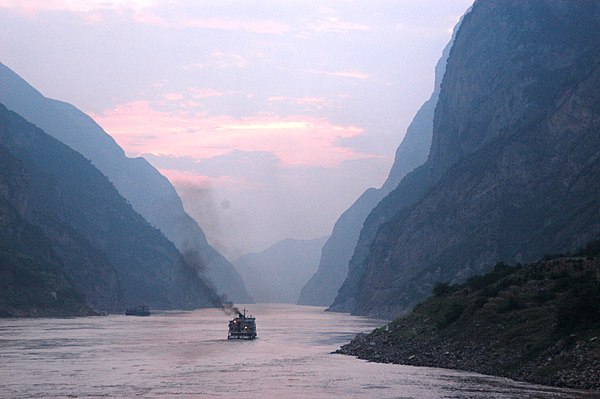asyncData
HomeAmazon River

The headwaters of the Apurímac River on Nevado Mismi had been considered for nearly a century as the Amazon's most distant source, until a 2014 study found it to be the headwaters of the Mantaro River on the Cordillera Rumi Cruz in Peru.[12] The Mantaro and Apurímac rivers join, and with other tributaries form the Ucayali River, which in turn meets the Marañón River upstream of Iquitos, Peru, they form what countries other than Brazil consider to be the main stem of the Amazon. Brazilians call this section the Solimões River above its confluence with the Rio Negro[13] forming what Brazilians call the Amazon at the Meeting of Waters (Portuguese: Encontro das Águas) at Manaus, the largest city on the river.
Missouri River

The Missouri River is the longest river in North America. Rising in the Rocky Mountains of western Montana, the Missouri flows east and south for 2,341 miles before entering the Mississippi River north of St. Louis, Missouri.
Nile

The Nile has two major tributaries – the White Nile and the Blue Nile. The White Nile is considered to be the headwaters and primary stream of the Nile itself. The Blue Nile, however, is the source of most of the water, containing 80% of the water and silt. The White Nile is longer and rises in the Great Lakes region of central Africa, with the most distant source still undetermined but located in either Rwanda or Burundi. It flows north through Tanzania, Lake Victoria, Uganda and South Sudan. The Blue Nile begins at Lake Tana in Ethiopia[13] and flows into Sudan from the southeast. The two rivers meet just north of the Sudanese capital of Khartoum.[14]
Murray River

The Murray River is a river in southeastern Australia. It is Australia's longest river at 2,508 km in length, and its tributaries include five of the next six longest rivers of Australia, whose catchment area together form the Murray-Darling basin.
Onyx River

The Onyx River is an Antarctic meltwater stream which flows westward through the Wright Valley from Wright Lower Glacier and Lake Brownworth at the foot of the glacier to Lake Vanda, during the few months of the Antarctic summer. At 32 kilometres (20 mi) in length, it is the longest river in Antarctica.[1]
Paraná River

The Paraná River is a river in south Central South America, running through Brazil, Paraguay, and Argentina for some 4,880 kilometres (3,030 mi).[3] It is second in length only to the Amazon River among South American rivers. The name Paraná is an abbreviation of the phrase 'para rehe onáva', which comes from the Tupi language and means 'like the sea', that is, 'as big as the sea. It merges first with the Paraguay River and then farther downstream with the Uruguay River to form the Río de la Plata and empties into the Atlantic Ocean.
Volga River

The Volga is the longest river in Europe. Flowing through Central Russia to Southern Russia and into the Caspian Sea, it has a length of 3,531 km and a catchment area of 1,360,000 km². It is also Europe's largest river in terms of discharge and drainage basin. It is widely regarded as the national river of Russia.
Yangtze

The Yangtze or Yangzi (English: /ˈjæŋtsi/ or /ˈjɑːŋtsi/) is the longest river in Asia, the third-longest in the world and the longest in the world to flow entirely within one country. It rises at Jari Hill in the Tanggula Mountains (Tibetan Plateau) and flows 6,300 km (3,900 mi) in a generally easterly direction to the East China Sea. It is the sixth-largest river by discharge volume in the world. Its drainage basin comprises one-fifth of the land area of China, and is home to nearly one-third of the country's population.[7]
Yellow River

The Yellow River or Huang He (About this soundlisten (help·info)) is the second-longest river in China, after the Yangtze River, and the sixth-longest river system in the world at the estimated length of 5,464 km (3,395 mi).[1] Originating in the Bayan Har Mountains in Qinghai province of Western China, it flows through nine provinces, and it empties into the Bohai Sea near the city of Dongying in Shandong province. The Yellow River basin has an east–west extent of about 1,900 kilometers (1,180 mi) and a north–south extent of about 1,100 km (680 mi). Its total drainage area is about 795,000 square kilometers (307,000 sq mi).